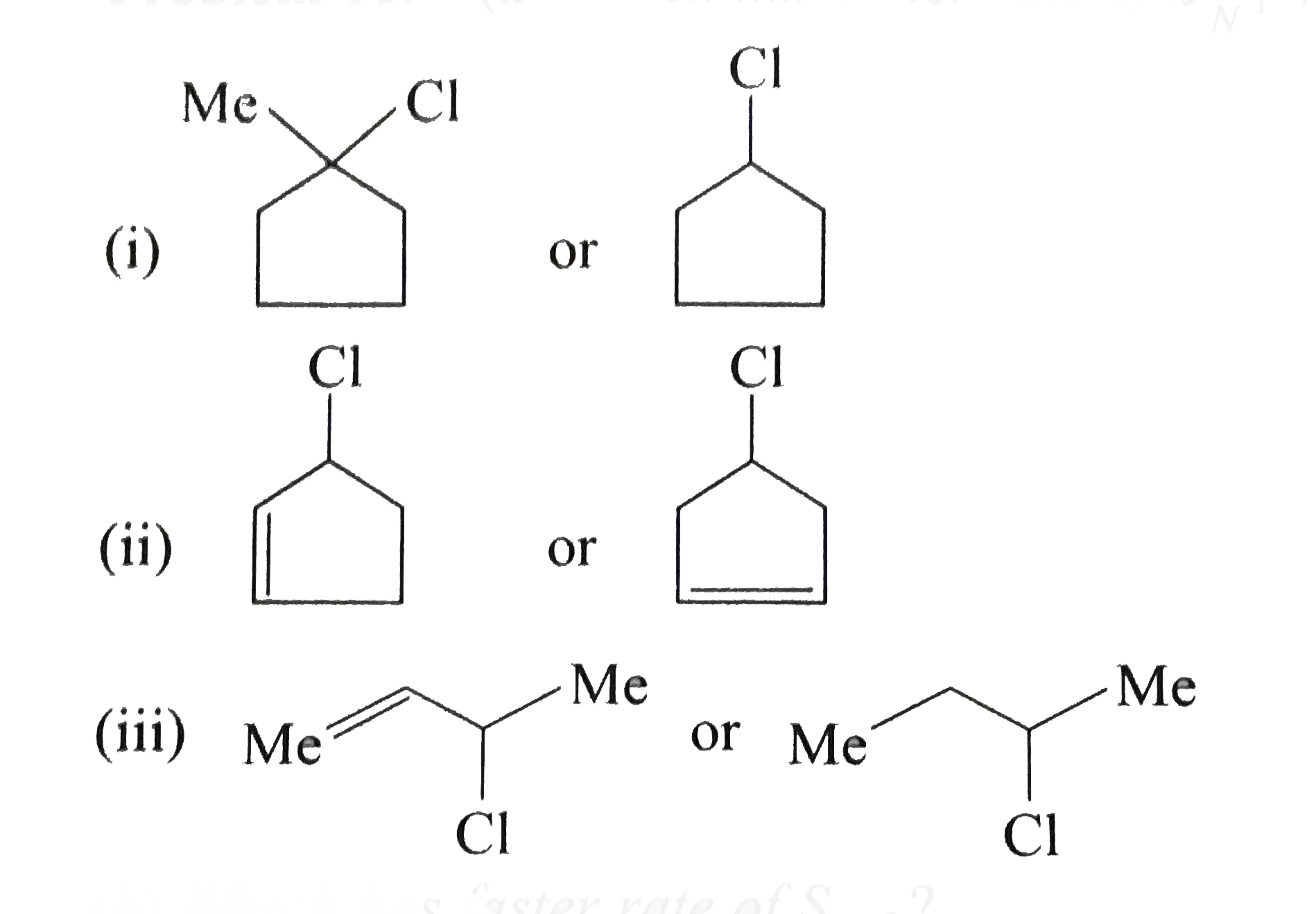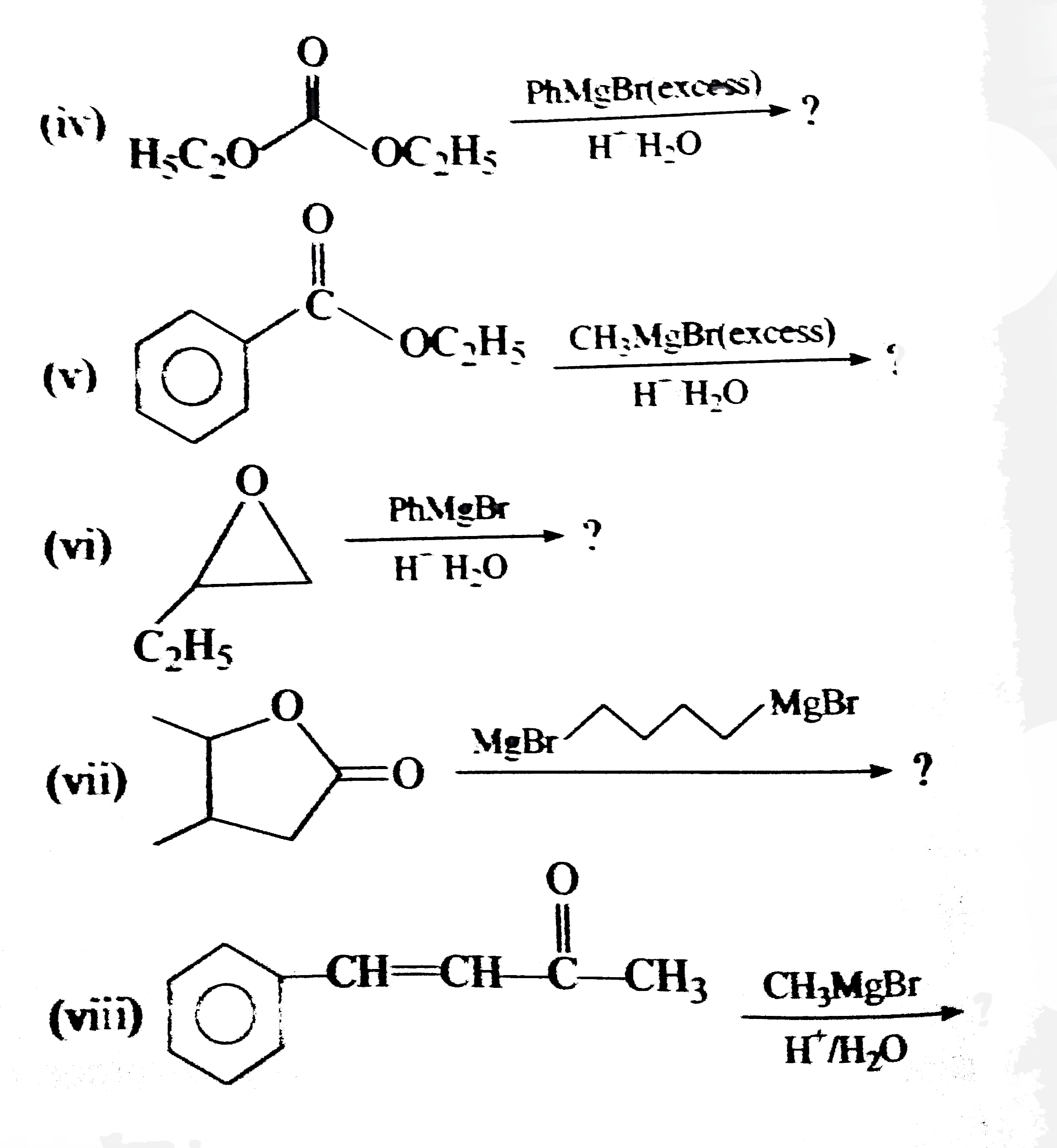Complete Solutions to Problem of chapter HALOALKANES AND HALOARENES of Class 12 book with complete answers and questions
| Class 12 | CHEMISTRY |
| Chapter | HALOALKANES AND HALOARENES |
| OP TANDON | Problem |
| Number Of Questions | 11 |
| Academic Year | 2023-24 |
How do alkyl, allyl and vinyl halides differ in structure ?
View SolutionGive the common nad IUPAC names for `C_(4)H_(9)Br` isomers and classify them as to whether they are `1^(@),2^(@) " or " 3^(@)`
View Solution(a) Give simple test to distinguish among hexane and `CH_(3)-CH=CHCI.`
(b) Give simple test to distinguish among
`CH_(3)-CH=CHCI,CH_(3)CH_(2)CH_(2)CI " and " CH_(2) =CH -CH_(2) Cl.`
View SolutionGive reasons for the following:
(a) Potassium cyanide reacts with R -X to give alkyl cyanide. While silver cyanide forms an isocyanide as a major product.
(b) Silver nitrite reacts R-X to give a mixture of nitroalkane and alkyl nitrite.
(c) R-OH does not react NaBr but on adding `H_(2)SO_(4)` . if forms R-Br.
(d) Alcohols do not undergo substitutionl in neutrol or alkaline solution.
View SolutionA halide, `C_(5)H_(11)X`, on treating with alc. KOH gives only pent -2- ene. What is halide ?
View SolutionA white precipitate was formed slowly when silver nitrate was added to compound `(A)` with molecular formula `C_(6)H_(13)Cl`.Compound `(A)` on treatment with hot alcoholic potassium hydroxide gave a misture of two isomeric alkenes `(B)` and `(C)`, havinig the formuls `C_(6)H_(12)`. The mixture of `(B)` and `(C)`, on ozonolsis, furnished four compounds.
i. `CH_(3)CHO`,ii `C_(2)H_(5)CHO`
iii. `CH_(3)COCH_(3)`,(iv) `CH_(3)-underset(CH_(3))underset(|)(CH)-CHO`
What are the structures of (A),(B)and (C) ?
View SolutionHow many isomers are possible for `C_(4)H_(8)F_(2)` and give their IUPAC names:
View SolutionGive the structures of two different alkyl bromides both of which yield the indicated alkene as the exclusive product of `E_(2)` elimination:
`(a) CH_(3) -CH=CH_(2) " "(b) (CH_(3))_(2) C=CH_(2)`
(C) `BrCH=CBr_(2)`
View Solution(a) Indicate whether the following are `S_(N^(1)),S_(N^(2)),E_(1) " or "E_(2)` reactions.
`(i) CH_(3)CH_(2)CH_(2)CI+I^(-) to`
`(ii) (CH_(3))_(3) CBr+CN^(-)(alc.) to`
`(iii) CH_(3)CH(Br)CH_(3) +OH^(-) (alc.) to`
`(iv) (CH_(3))_(3) C-Br+H_(2)O to`
(b) Give the decreasing order of reactivity of the alkaline hydrolysis of the following alkyl halides toward `(A)S_(N^(1))(B) S_(N^(2))(C)` in pressure of `AgNO_(3).`
`(i) (CH_(3))_(2)C(Br) -C_(2)H_(5) (ii)C_(5)H_(11)Br`
`(iii) C_(2)H_(5)CH(Br)C_(2)H_(5)`
(c) Give the decreasing order reactivity of the alkaline hydrolysis of hte following halides towards `S_(N^(1)) (i) MeCI (ii) PhCH_(2)CI(ii)Ph_(2)CHCI(iii)Ph_(3)C-CI`.
(d) Determine the relative `S_(N^(2))` reactivity with NaCI in aprotic DMSO of the following alkyl halides :
`(A) (i) CH_(3)CHCICH_(2)CH_(3)(ii)CH_(3)CHBrCH_(2)CH_(3)`
`(iii) CH_(3)CHICH_(2)CH_(3)`
`(B) (i) CH_(3)CH(CH_(3))CH_(2)CH_(2)I`
`(ii) CH_(3)CH(CH_(3))CHICH_(3)(iii) CH_(3)CI(CH_(3)) CH_(2)CH_(3)`
(e) Arrange the following in the order of decreasing nucleophilic character:
`H_(2)O,^(-)OH,CH_(3)O^(-), CH_(3)COO^(-)`
(f) Arrange the following in the decreasing order as leaving group in `S_(N)` reaction:
`CH_(3)COO^(-), C_(6)H_(5)O^(-), C_(6)H_(5)SO_(3)^(-), CH_(3)O^(-)`
View Solution(a) Which has faster rate of `S_(N^(1))`?

(b) Which has faster rate of `S_(N^(2))`?

View SolutionDraw the products of the following reaction with organometallic reagent.


View Solution
Problem questions and complete solutions for chapter HALOALKANES AND HALOARENES of G.R. BATHLA & SONS CHEMISTRY (HINGLISH) of Class 12
All Exercises from OP TANDON Class 12 CHEMISTRY HALOALKANES AND HALOARENES
- Assertion -Reason Type Questions
- Example
- illustrations of objective questions
- Linked comprehension type questions passage
- Matching type
- Matrix -Match Type Questions
- Objective Questions
- Objective Questions Lavel -B
- Objective Questions Lavel -B Set II This set contains the questions
- Problem
- Problem For Practice
- Problems based on structure and properties
- Single Interger answer type questions